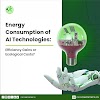The Yorubas have a saying that "àgbẹ̀ lọba", which means that the farmer is king. If the world was a marvel movie, farmers would be the guardians of the galaxy. So, it's an understatement to say that agriculture is important to man. The very core of our existence depends on this sector of production, as without food, man is as good as dead. The digital world we are in today gives the impression that all we need to survive is data and the Internet, and the drive for sophistication takes our attention away from the things that really support our survival. If a global drought breaks out, it's then we'll realise that we can't eat data.
Speaking of a global drought, the risk of this occurring is not totally unlikely. In fact, many factors such as climate change and farm diseases have adversely affected agriculture in recent times and have put food production yield on a decline. According to a FAO report in 2020, about 690 million people were in a state of hunger that year, and it is projected that by 2050, food production will need to be increased by 70% in order to keep humans alive. These constraints on food availability are made even worse by the rising global population year after year. We're getting more in number but food is getting less in production and this invariably creates an imbalance. You will agree with me that if nothing is done about the situation we have on our hands, the future is bleak for us, and worse off for posterity.
These are not all of the problems on ground. I hate to be the bearer of bad news, but there is more. While agriculture helps to sustain humanity, over the ages, it has morphed to become one of the very things that threaten our existence. A friend, and at the same time an enemy; an angel on one hand, a devil on the other. How is this? It may surprise you to learn that in a world where we complain of industries, vehicles and private jets emitting tons of Greenhouse gases (GHG), agriculture had a contribution of about 24% of total GHGs emitted globally in 2010. It was the second leading contributor in this regard after electricity. Ladies and gentlemen, agriculture whose yield is affected by climate change, is a major cause of climate change in itself.
Sometimes, we need to ask it a very important question, "Mr Agric, whose side are you on? Are you for us or against us?"
But truth be told, Agriculture in itself isn't the problem. It can't be the problem because farming doesn't run itself, right? The practice and processes involved are carried out by none other than those named after the profession—farmers. Now, before you call farmers the bad guys, remember that they're the guardians of the galaxy, you don't want to mess with those whose job is literally to keep us alive. No, they're not the villain. They are pressured by the need to increase production and still make a profit, the only problem is that in their bid to quell this pressure, they resort to the use of fertilizers, power generators, machinery and unsustainable livestock sustenance practices, all of which blow up the GHG emissions year after year. Our farmers seem to be in a fix. It's like being caught between the devil and the deep. What do they do?
While agrifood sectors emit around 1/3 of total greenhouse gas emissions, they are also very vulnerable to climate change.
— Food and Agriculture Organization (@FAO) April 4, 2022
Green & climate-resilient agriculture must be part of the climate solution. @FAO is working to make it happen👉https://t.co/1vpel8OMPm #ClimateChange #SDG13 pic.twitter.com/0jq3QndQ7K
I've waited eagerly to get to this point where I can finally share the good news. Yes, there is good news! The good news is that there is a solution to all of the problems facing agriculture today, and that solution lies in one thing—Climate-Smart Agriculture (CSA). Have you heard about Climate-smart agriculture? Well, now you have. According to World Bank (2021), Climate-smart agriculture is
"an integrated approach to managing landscapes—cropland, livestock, forests and fisheries--that address the interlinked challenges of food security and climate change."
In essence, it is a form of agriculture that solves both the problem of decline in food production and climate change, caused by agricultural practices. With CSA, we can kill two stones with one bird (no longer the other way around, we don't kill birds here, we stand with birds. Say no to the killing of birds). I'm supposed to tell you this in our next article coming up next week but I can't keep the excitement for that long so let me whisper it now—with CSA, farmers will make more money than when practising regular farming.
Gbam! Sounds like magic, right? I mean, what more could we ask for? More yield on the farm to go round for everyone, climate action with less GHGs, more money to be made, Climate-smart agriculture is the total package. Join us again next week as we share more insights on CSA and how it impacts our environment. Till then, keep greening.
References
The state of Food Security and Nutrition in the world. FAO. (2020). Retrieved October 3, 2022, from https://www.fao.org/3/ca9692en/online/ca9692en.html#chapter-Key_message
Agriculture and food production contribute up to 29 percent of global greenhouse gas emissions according to comprehensive research papers. CCAFS. (2014). Retrieved October 3, 2022, from https://ccafs.cgiar.org/media/press-release/agriculture-and-food-production-contribute-29-percent-global-greenhouse
Climate-smart agriculture. World Bank. (2021). Retrieved October 3, 2022, from https://www.worldbank.org/en/topic/climate-smart-agriculture




.jpeg)













0 Comments